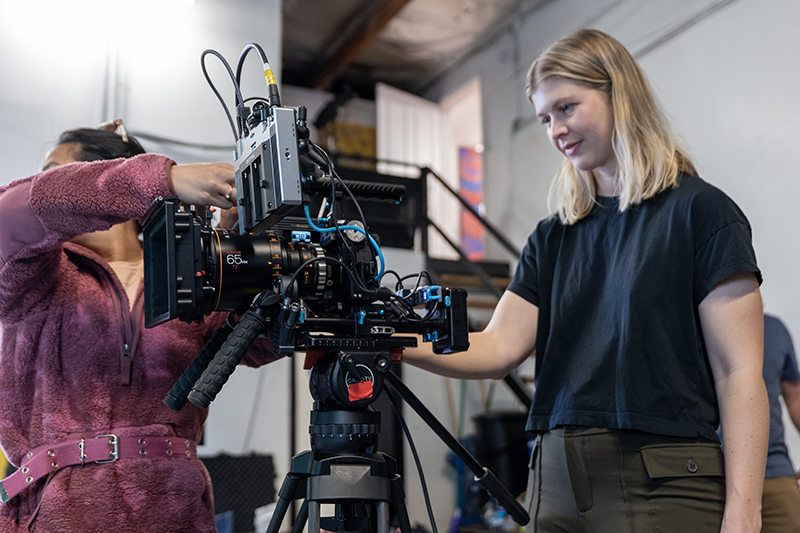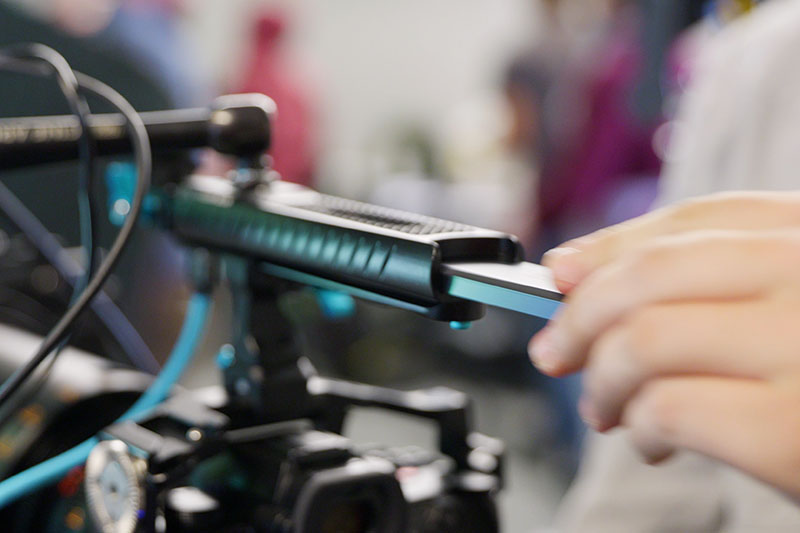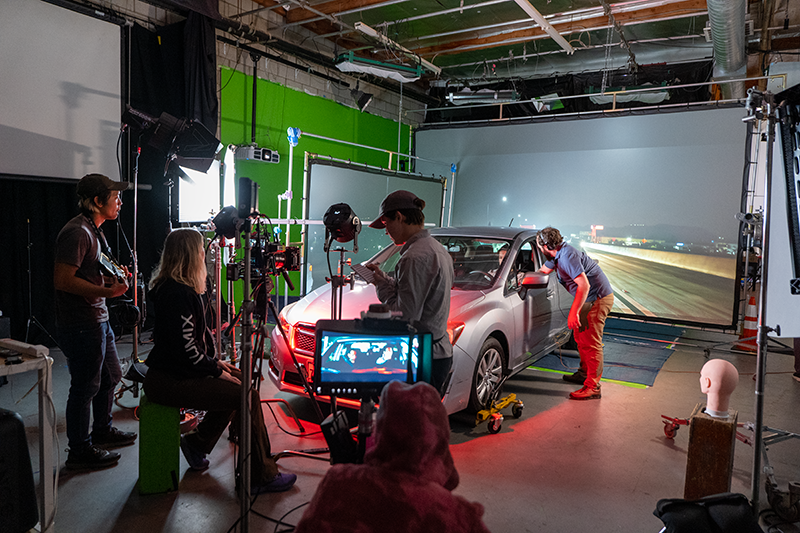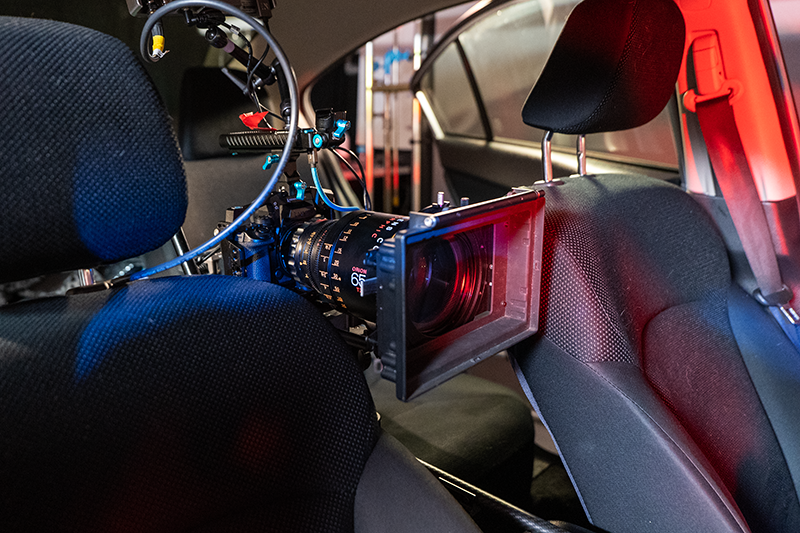Carissa Dorson shoots Freeway Werewolf with S5IIX
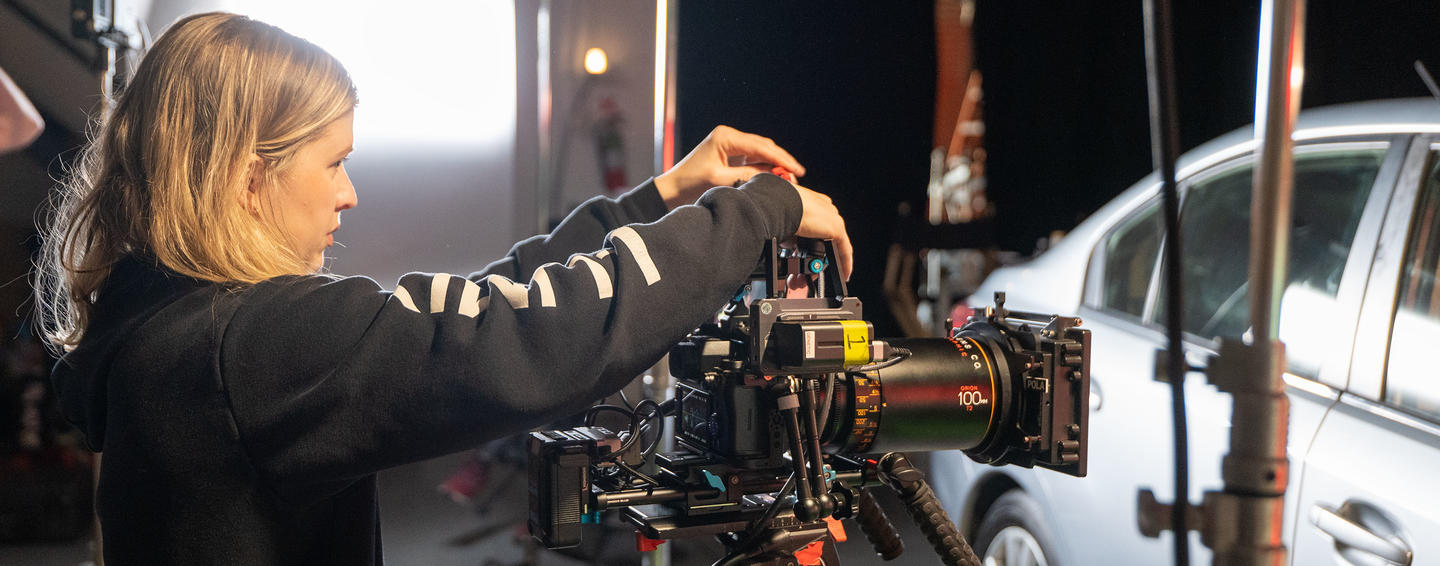
S5IIX - Shooting ProRes
Capturing entirely in a ProRes workflow, cinematographer Carissa Dorson shoots short film, "Freeway Werewolf", with S5IIX
Freeway Werewolf is a horror comedy film in which a couple’s relationship reaches its breaking point while stuck in bumper to bumper LA traffic. To make it even worse, a full moon is out, and the male protagonist happens to be turning into a werewolf. The short film was shot by cinematographer and LUMIX Ambassador Carissa Dorson with the new LUMIX S5IIX and Atlas Orion 2x anamorphic lenses at Rear Projection Driving, a stage in North Hollywood, California.
Carissa Dorson is a Los Angeles-based director of photography originally from Silver Spring, Maryland. Her credits include TV shows Sketchy Times with Lilly Singh and A Little Late with Lilly Singh (NBC). She also lensed the feature film It's a Party (Showtime) and short film I Think She Likes You (Tribeca Film Festival). “LUMIX cameras have helped me shoot so many projects over the years,” said Dorson, on the set of Freeway Werewolf. “Whether it's commercials, short films, or a B camera when I'm shooting ALEXA projects, the cameras are really versatile, and they give me the professional look I'm going for.”
DP Carissa Dorson (right) and 1st AC (Erica Chan) set up the S5IIX and an Atlas Orion 2x anamorphic lens.
The S5IIX – ProRes Workflow
The LUMIX S5II and S5IIX are the first LUMIX hybrid mirrorless cameras to utilize Phase Detection Auto-Focus (PDAF) thanks to a newly developed 24.2-megapixel 35mm full-frame CMOS sensor and a new imaging engine. Developed under the L² Technology alliance formed by LEICA and LUMIX, the new engine provides high resolution, natural description, and approximately 2x higher-speed signal procession for high bit-rate video recording.
One of the most unique features of the S5IIX is the ability to output professional quality and high resolution video files, including 5.8K ProRes 422 HQ, via the camera’s USB-C port to an SSD (Solid State Drive), which can capture up to 2TB of footage from LUMIX approved drives. For Freeway Werewolf, Dorson employed Kondor Blue’s new PRO-BLADE SSD handle, an innovative top handle that houses blazing fast SanDisk PRO-BLADE SSD Mags, to manage the most demanding on set workflows. The SSD handle has a built in double NATO Rails and safety stops to configure in different positions on Kondor Blue’s S5II/X cage.
For a full ProRes 422 HQ workflow, Dorson used Kondor Blue's new PROBLADE handle that houses SanDisk PROBLADE NVME drives.
Because she was shooting in anamorphic, Dorson filmed in the S5IIX’s 4:3 mode, capturing 3328x2496 ProRes 422 HQ files at 23.98-fps. “Being able to shoot ProRes makes our workflow so much easier because our post team doesn’t have to go through the transcoding process,” revealed Dorson. “We can just go with an easier workflow that saves time for my colorist and editor.”
Shooting Rear Projection
Rear projection is a cinematic technique that has been used for decades to create the illusion of a background that is not actually present on the set. The process works by projecting an image onto a screen that is placed behind the actors, who are then filmed from the front. This technique can be used to create a variety of effects, most commonly for driving scenes or cityscapes. One of the benefits of rear projection is that it can be used to create realistic effects without the need for expensive special effects, or on location shooting, e.g., freeway traffic. This made it a popular choice for filmmakers in the early days of cinema, when budgets were tight, and technology was limited.
Freeway Werewolf was shot at Rear Projection Driving in North Hollywood, CA. Dorson's main challenge was to make the lighting look believable and not spill onto the projection screen.
In shooting rear projection, it can be difficult to get the lighting right, so the actors don't appear to be standing in front of a projected image. “The biggest challenge with this process was making it feel like they’re actually on the highway,” explained Dorson. “Making sure the lighting is believable, but also not spilling onto the projection screen. My gaffer, Lawrence Le, and key grip, Josh Gordon, set up Astera Titan Tubes in a ‘chase’ mode to simulate headlights passing by, as well Astera AX9’s to simulate brake lights. A lot of flagging was done to keep light off the screens.”
Using Kondor Blue’s S5II/X cage, Dorson powered her accessories via D-Tap with FX LION V-mount batteries and recorded files via USB-C output to a 1TB SanDisk NVME PRO-BLADE SSD. For the moving shots that roam outside of the car at the end of the film, she used a DJI RS3 gimbal with a LUMIX S Series 35mm f1.8 prime lens. “When I'm shooting a short film, I really like it when our footprint is small, and using a smaller camera like the Lumix S5IIX gives me the freedom to pick up the camera and go,” explained Dorson. “Especially for this shoot, I had the challenge of maneuvering inside the car, both handheld and on a slider. The small camera build made my life a lot easier.”
Dorson liked the small footprint of the S5IIX to place the camera in tight spaces a larger cinema camera would not fit.
For more information on Director of Photography Carissa Dorson, visit her website here.
